The failure to use VAR for the challenge on Aberdeen striker Duk at Ibrox proves the technology is a waste of £1.2 million per year.
Scottish Premiership clubs are splashing out that figure annually for a system that is not working as promised when introduced after the World Cup break.
If it was working there would have been a VAR review on the challenge on Duk by Rangers’ defender Connor Goldson.
The 12 Premiership clubs pay the £1.2 million to implement VAR technology on a sliding scale with each share depending on final league placings.
Aberdeen will pay a six figure sum for a system that let them down badly at Ibrox.
It is not the first time VAR has been found wanting for the Dons.
A VAR review of a tackle by Graeme Shinnie where the midfielder clearly won the ball in a 50-50 challenge with Ross County’s Jack Baldwin resulted in a red card.
After the referee had given no foul.
Ultimately Shinnie would receive a ridiculously hefty four-game ban after an appeal on the dismissal failed.
How VAR should be used?
Is VAR giving Premiership clubs like the Dons paying for its use bang for their buck?
On the evidence of Ibrox – no.
What is the point of VAR if it isn’t used to review incidents such as the foul on Duk at Ibrox?
VAR should be used to bring clarity to issues like that Duk challenge, not to rule out perfectly good goals because a player’s fingernail or fringe is offside.
Aberdeen striker Duk was clearly wrestled to the ground by Goldson with the game finely balanced at 0-0.
The foul started outside the penalty area but continued into the box so it was therefore a potential penalty/red card offence.
Goldson feared the worst as his first reaction when the ball went out of play was to look at referee John Beaton.
VAR is used to review a decision if the potential of a “clear and obvious error” has been identified.
Goldson’s challenge on Duk was as blatant a foul as you will see yet referee Beaton awarded a corner to the Dons.
So it was a clear and obvious error and VAR should have came into play.
Questions needed to be answered by VAR regarding that incident.
Was it a penalty or a free-kick, was it a red card? Or at the other extreme was it even a foul?
Everyone inside Ibrox was asking those questions, and wanted them answered.
All except referee Beaton, his assistants and the Video Assistant Referees
They were valid questions that Aberdeen boss Barry Robson still sought answers to in the post-match press conference inside Ibrox.
‘Where was VAR?’
I was there. The conversation between Robson and the press went like this:
ROBSON: “In the first-half is it a penalty or a free-kick outside?
“It’s one or the other. Where was VAR? Anyone see it?
“I dunno. Was it in the building today? I’m being serious, was it?”
JOURNALIST: “I think it was outside.”
ROBSON: “Was it a free-kick?”
ANOTHER JOURNALIST: “Aye it was.”
ROBSON: “So where was VAR? What’s the point in us all speaking because none of us know do we?
“We don’t. I don’t know, I don’t understand.
“We are having a conversation here, does any of us know? That’s it.”
There was then silence for 10 seconds, because no-one in the room could issue a compelling argument for VAR not being used for the challenge on Duk.
Those questions still remain unanswered because there is no line of communication for referees or Video Assistant Referees to explain their decisions.
Not even straight after a match.
When asked if he had approached referee Beaton for an explanation Robson said: “Not allowed to do that either.”
It would be beneficial if there was some line of communication opened up for officials to explain their decisions.
Possibly an official website referees they can post their reasoning on calls.
That communication would help because four days on I am still scratching my head as to why VAR was not used when Duk was wrestled to the ground.
And I’m still baffled as to why Premiership clubs are forking out £1.2 million every season for a system that is letting so many of them down?
If VAR is not used for incidents like Goldson’s challenge on Duk what is the point of it
No Scottish team will ever win TWO European trophies in one year again
Thursday marks the 40th anniversary of Aberdeen’s greatest ever day – the triumphant European Cup Winners’ Cup final defeat of Real Madrid.
Four decades on the Gothenburg Greats’ legacy still resonates within Pittodrie, the Granite City and Scottish football.
The club, players and coaches from 1983 will be presented with the freedom of the city by Aberdeen City Council at a Pittodrie ceremony on Friday.
The Gothenburg Greats will also be honoured at the Dons’ Premiership clash against Hibs on Saturday.
Aberdeen remain the last team to beat 14-time Champions League winners Real Madrid in a European final.
Gothenburg is the gift that keeps on giving to the Red Army.
However, it should also be remembered that Sir Alex Ferguson’s side won TWO European trophies in 1983.
They also beat European Cup winners SV Hamburg over two legs to claim the Super Cup.
No Scottish club will ever do that again.
A Scottish club may win the Europa League or Conference League.
Rangers got to the Europa League final last season only to lose out to Eintracht Frankfurt on a penalty shoot-out.
However no team from Scotland will ever do the Euro double again, European football has moved on far too much since 1983.
It is conceivable Scotland could produce a winner of the Europa League or Conference League.
However to back it up by beating the Champions League winners to claim the Super Cup is a step too far.
Aberdeen will be the only club to hold that special honour.
Duk deserves Team of the Year nod
Aberdeen goal hero Duk was rightly named in the PFA Scotland Premiership Team of the Year.
The 23-year-old has been a breath of fresh air for the Scottish game with his flair, energy and audacious goals.
Duk has netted 18 goals in all competitions this season and the feeling is there is very much more to come from the 23-year-old.
Your PFA Scotland Premiership Team of the Year – voted for by the players ⬇️👏 pic.twitter.com/nkhDy4sh9E
— PFA Scotland (@PFAScotland) May 9, 2023
Clubs including Burnley and Everton are tracking Duk with the view to a potential summer swoop.
However, the Dons board are in no rush to sell the Cape Verde international.
Hopefully, he will stick around Pittodrie to be named in the Premiership team of the year for the 2023-24 season.
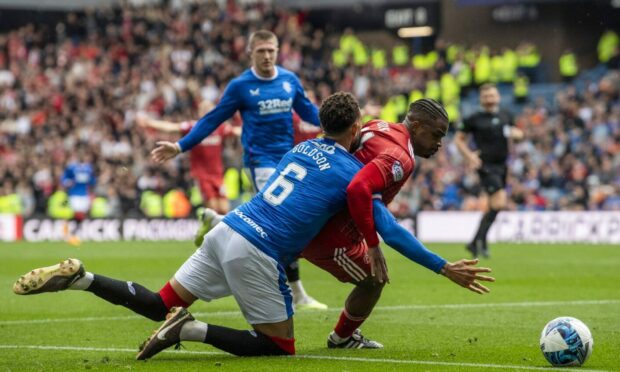

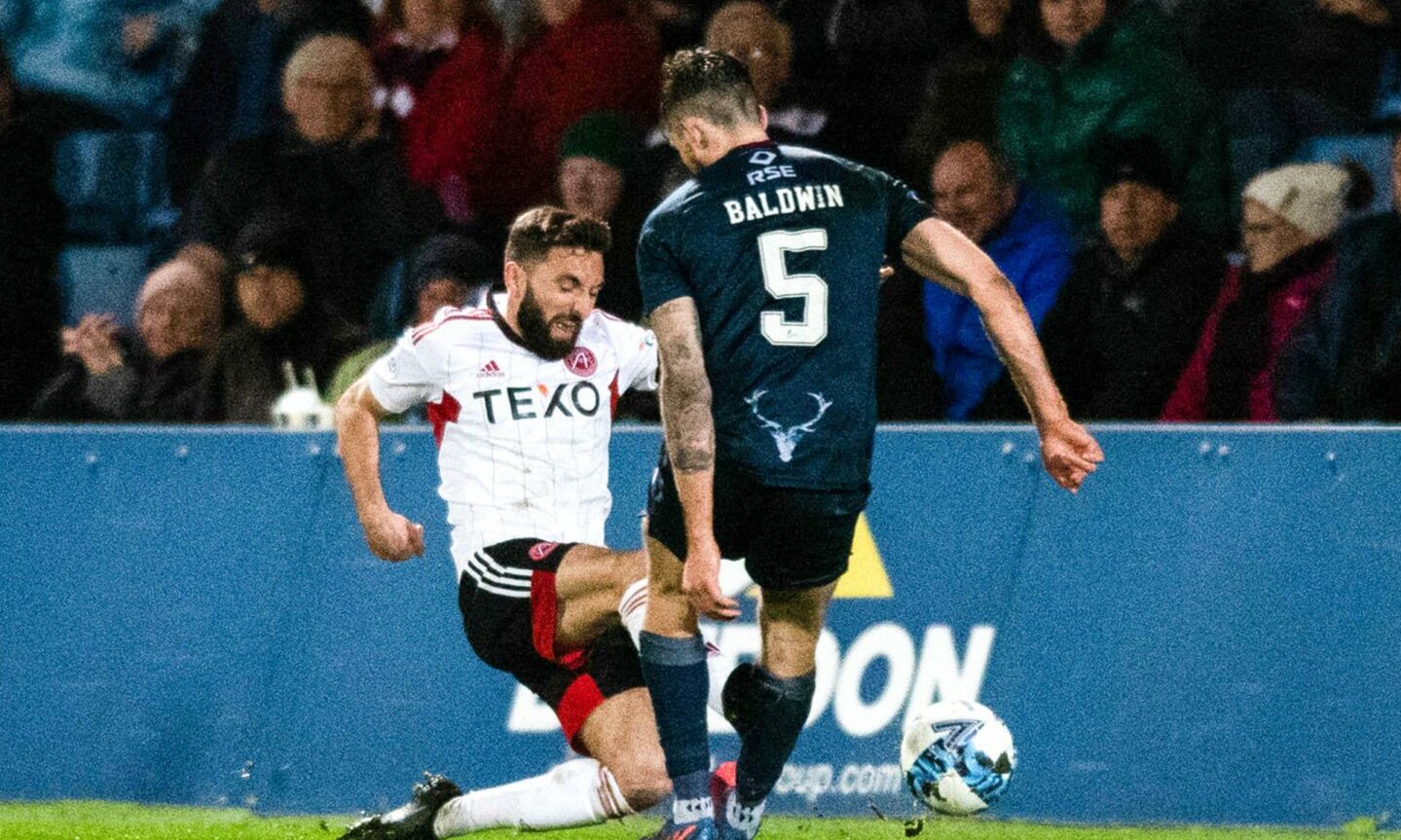
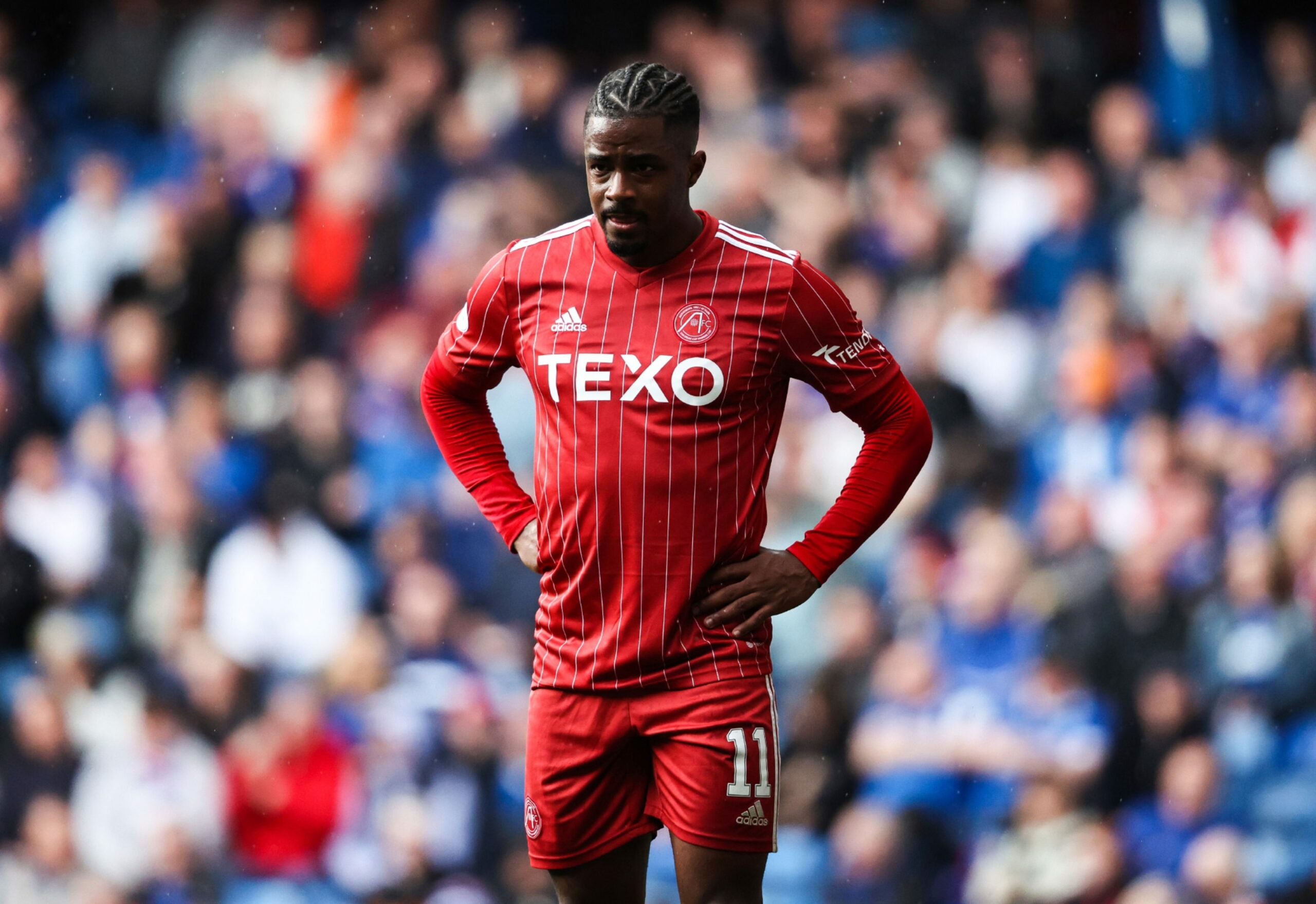

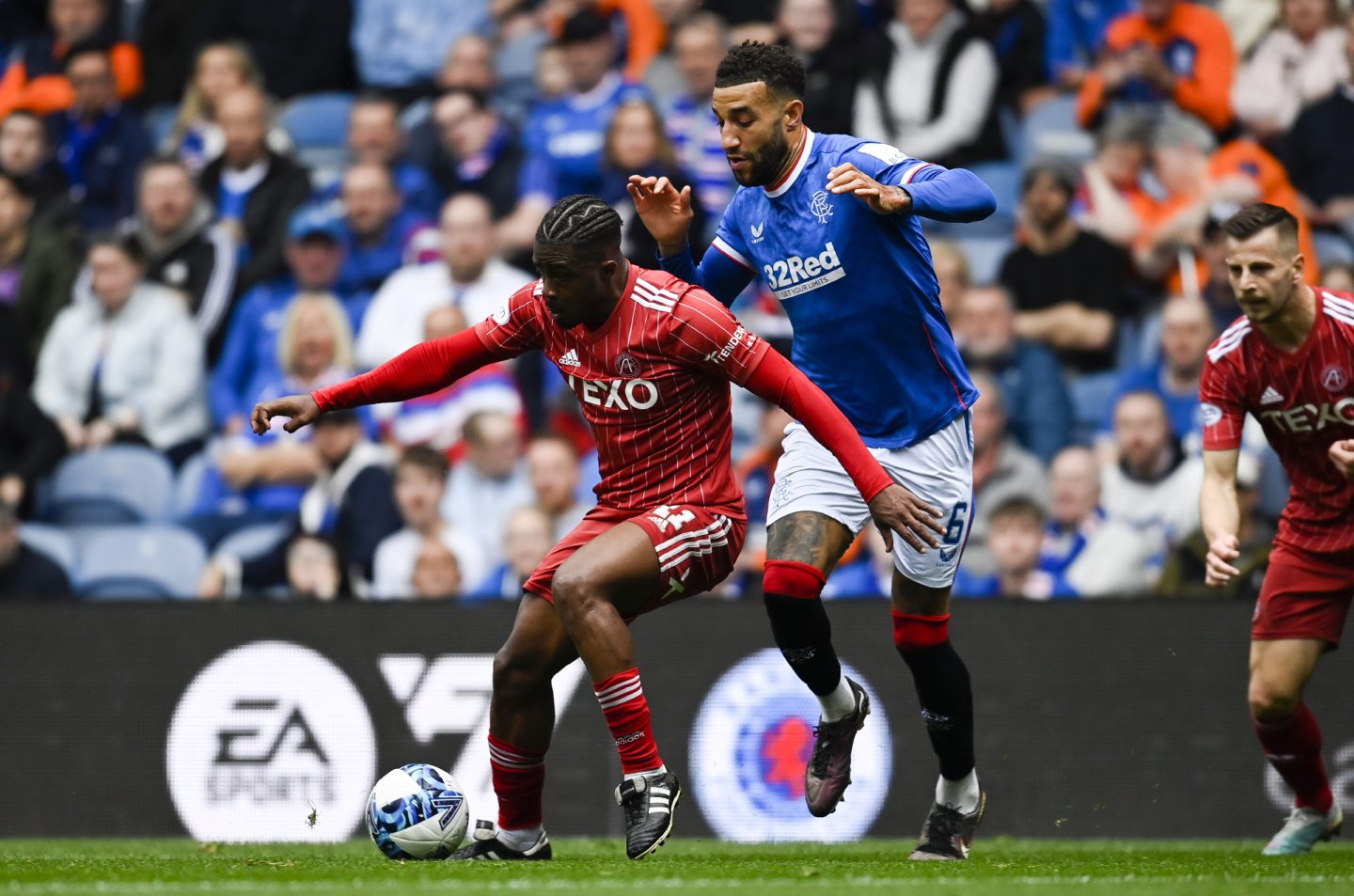
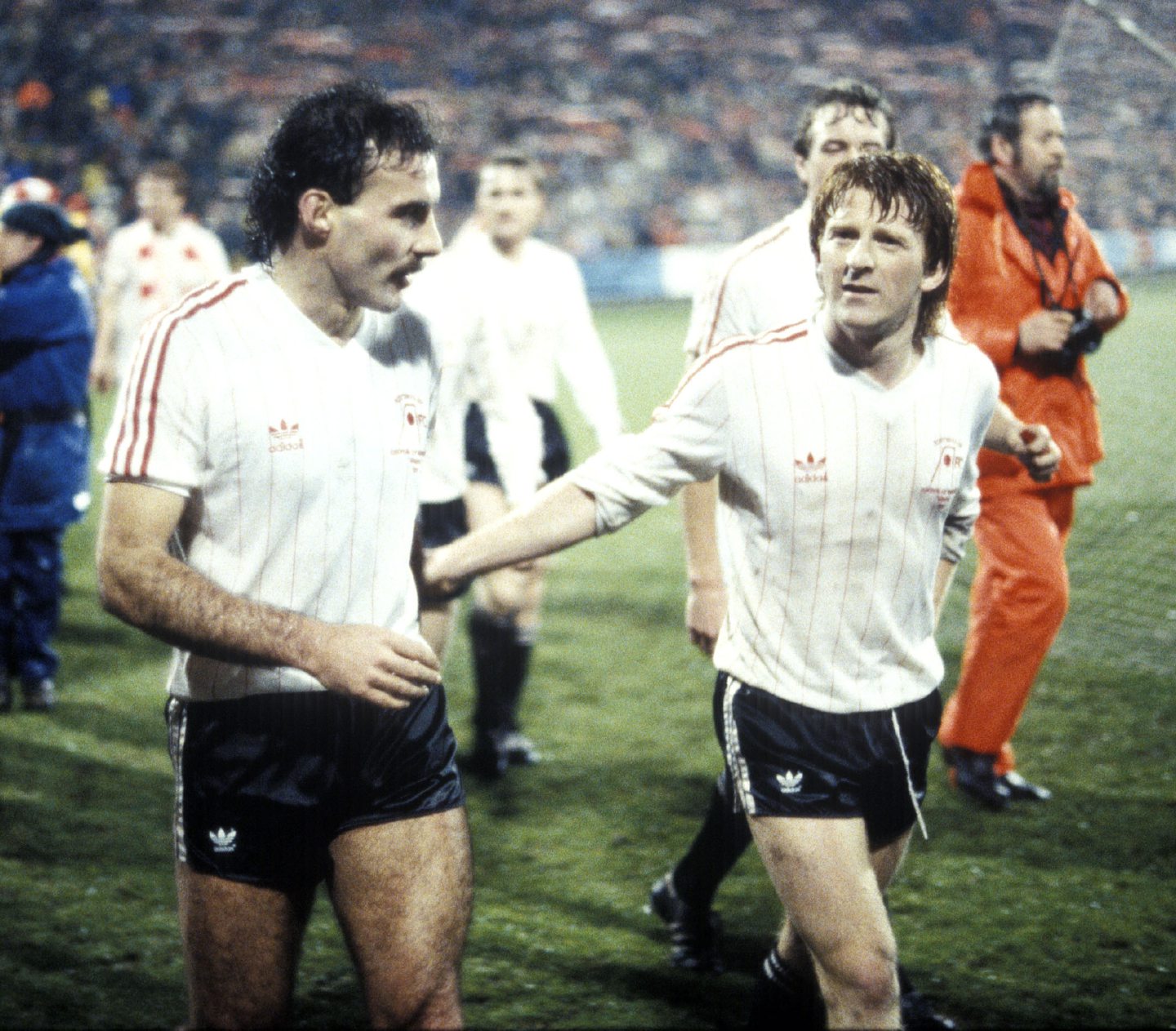
Conversation